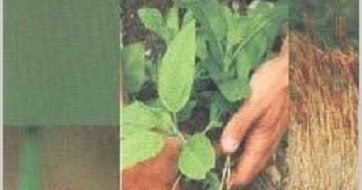Download fifa 13 for pc. Book Detail: Language: English Pages: 199 Author: TNAU Price: Free How to Download PDF Book Full Guide Course Outline: Principles of Plant Breeding Lec 01 – Aims and objectives of Plant Breeding Lec 02 – Modes of Reproduction Lec 03 – Apomixis – classification and significance in plant breeding Lec 04 – Modes of Pollination Lec 05 – Classification of. Principles of Plant Breeding the course deals with the following aspects i. Learn breeding procedures in self and cross pollinated crops ii. Understand exploitation of heterosis utilizing male sterility and other methods iii. Know about the various population improvement programmes.
- Elementary Principles Of Plant Breeding Pdf
- Principles Of Plant Breeding Notes Pdf
- Principles Of Plant Breeding Pdf Notes
By R. W. Allard. John Wiley & Sons, New York. 1999.

The first edition of Principles of Plant Breeding (1960), by R. W. Allard, professor of genetics and of agronomy and range science, was a book used worldwide as a university textbook as well as a guide for plant breeders. In this second edition, the author has edited the book, including additional data about the evolution of plant populations during domestication and cultivation; these evolutionary changes play an important role in understanding the principles and methods of plant breeding and improvement.
Elementary Principles Of Plant Breeding Pdf
The book has three parts: Introductory Topics, Biological Foundations of Plant Breeding, and Modern Plant Breeding. Part I, Introductory Topics, has five chapters: Darwinian Evolution, Origins of Agriculture, Evolution During Domestication, Mating System of Plants, and Overview of Plant Breeding. The author devotes the first two chapters of the book to the central ideas of Charles Darwin's Origin of Species (1859), to the Darwinian evolutionary changes which occur during cultivation, and to the origins of agriculture. In the third chapter, he describes evolution during domestication, discussing when the first selection pressure was applied to wild plants and what brings them to cultivation. In chapter 4, the author focuses on mating and reproductive systems, which are important in determining the methods of breeding for three main groups of plants (self-pollinated plants, cross-pollinated plants, and vegetatively reproducing plants). Chapter 5 surveys the major effects of mating systems, genetic linkage, and epistasis for the improvement of cultivated plants—factors that are so important for selection and successful plant breeding.
Part II, Biological Foundations of Plant Breeding, consists of six chapters: Heredity and Environment, Genetic Consequences of Hybridization, Inheritance of Continuously Varying Characters: Biometrical Genetics, Evolution During Cultivation, Marker-Assisted Analyses of Adaptedness in Nature, and Marker-Assisted Dissection of Adaptedness in Cultivation. In the second part, the author discusses the genetic principles of Mendelian inheritance on which plant breeding is based (chapter 6). Further, he covers Mendelian segregation and recombination (chapter 7), continuous variation, and biometrical methods (chapter 8). Improving adaptedness during the evolution of cultivated corn during long-term experiments lasting more than one hundred generations is discussed in chapter 9. Genetic markers in relation to adaptedness in nature and in the cultivation of plants are discussed in chapters 10 and 11.
Principles Of Plant Breeding Notes Pdf
Part III, Modern Plant Breeding, consists of the following chapters: Reproductive System and Breeding Plants, Breeding Self-Pollinated Plants, Breeding Hybrid Varieties of Outcrossing Plants, Breeding Clonal Propagated Plants, Breeding Hybrid Varieties of Selfing Plants and Plants that are Clonally Propagated in Nature, and Plant Breeding for Low Input Agriculture. In chapter 12, the author again stresses the importance of mating/reproductive systems for breeding plants of particular species. In chapters 13–15, he describes methods in the modern breeding of self-pollinated plants, outcrossing plants, and clonal propagated plants. Breeding hybrid varieties of self-propagated plants that are clonally propagated in nature is described in chapter 16. Breeding for low-input agriculture is a new agenda in agricultural production and plant breeding because 1.4 billion people worldwide still depend on subsistence agriculture, which is 60% of total global agriculture, producing only 15–20% of the world's food. This chapter is concerned largely with taking advantage of favorable genotype × environment interactions in low-input agriculture for increasing productivity.
Principles Of Plant Breeding Pdf Notes
In conclusion, it may be said that the second edition of the Principles of Plant Breeding includes many aspects of biological sciences and technology that are extremely important in developing more useful plants for today's world. The glossary and indexes at the end of the book are useful and this book is highly recommended for students, as well as for plant breeding professionals all over the world.